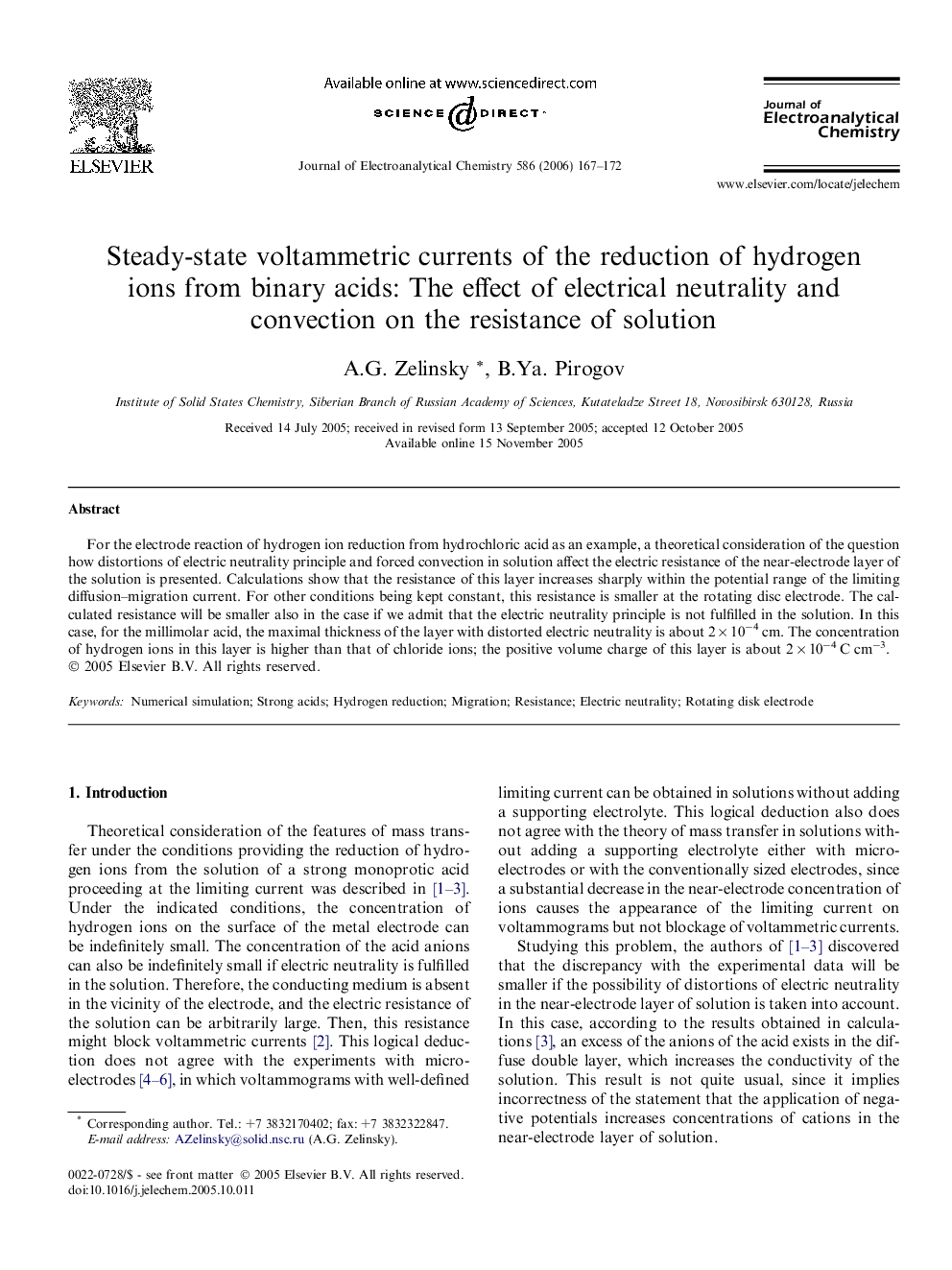| Article ID | Journal | Published Year | Pages | File Type |
|---|---|---|---|---|
| 221505 | Journal of Electroanalytical Chemistry | 2006 | 6 Pages |
For the electrode reaction of hydrogen ion reduction from hydrochloric acid as an example, a theoretical consideration of the question how distortions of electric neutrality principle and forced convection in solution affect the electric resistance of the near-electrode layer of the solution is presented. Calculations show that the resistance of this layer increases sharply within the potential range of the limiting diffusion–migration current. For other conditions being kept constant, this resistance is smaller at the rotating disc electrode. The calculated resistance will be smaller also in the case if we admit that the electric neutrality principle is not fulfilled in the solution. In this case, for the millimolar acid, the maximal thickness of the layer with distorted electric neutrality is about 2 × 10−4 cm. The concentration of hydrogen ions in this layer is higher than that of chloride ions; the positive volume charge of this layer is about 2 × 10−4 C cm−3.
